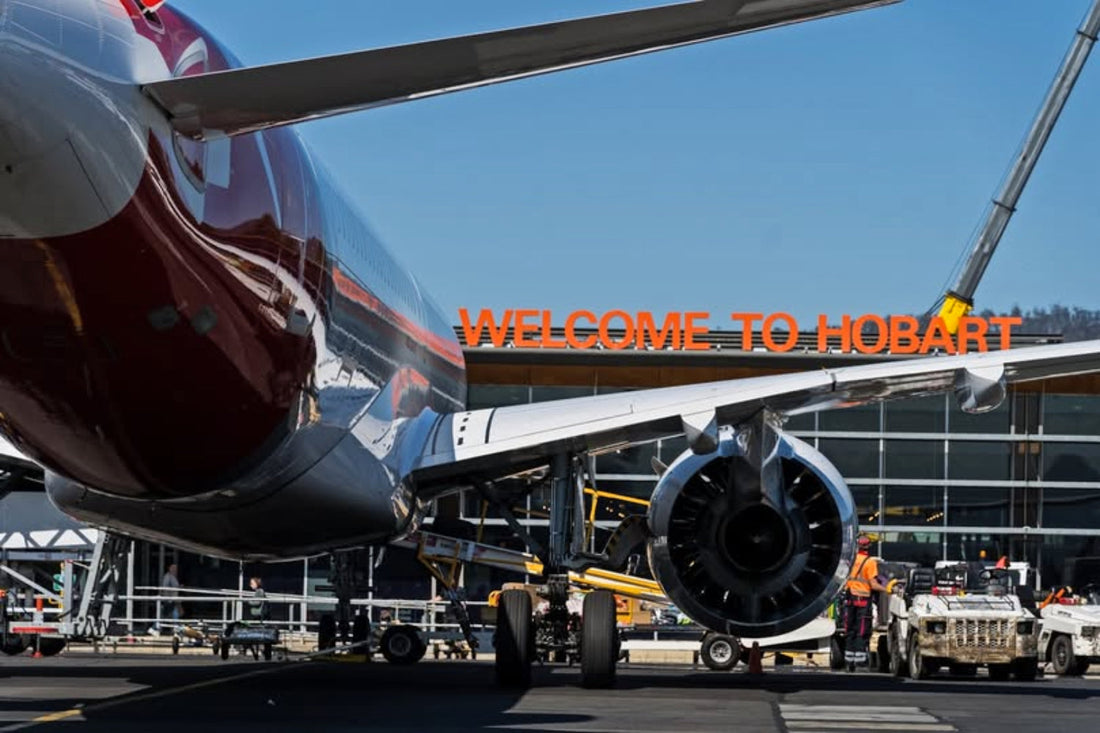
Hobart Airport Completes Runway Upgrade
Share
Hobart Airport (HBA) has completed its runway upgrade and can now handle aircraft as big as the Airbus A350 and Boeing 787, capable of connecting the Tasmanian capital to cities in Asia and the Middle East.
The upgrade strengthened the existing 2,727-metre runway to allow it to handle larger aircraft. Presently, the largest planes that regularly use the airport are B737 and A320 types operated by Qantas, Jetstar, and Virgin Australia.
The AUD130 million (USD84 million) project took 12 months to complete. It also saw the taxiways and enabling facilities upgraded. The airport's owners picked up AUD70 million (USD45.2 million) of the bill, while the Australian Government picked up the rest.
“These upgrades help connect Hobart to the world,” said Federal Transport Minister Catherine King.
“This investment has secured Hobart’s status as Australia’s Antarctic gateway, and will help grow economic activity from the Antarctic and Southern Ocean sectors,” she added. “Hobart Airport can now take on larger international passenger and freight flights, unlocking a world of opportunities for Tasmanians and the local visitor economy.
The latest data from the Australian Government’s Bureau of Infrastructure and Transport Research Economics (BITRE) reveals that Hobart was Australia’s ninth busiest airport in May 2025, handling 191,700 passengers. In the 12 months to May 31, 2025, the airport processed 2,656,600 passengers – creating something of a bottleneck as the terminal was only designed to handle 1.5 million passengers annually.
In the same 12-month period, Hobart – Melbourne (MEL) was the airport’s busiest city pair, with 1,413,300 passengers flying it. The airport's other significant city pair is Hobart – Sydney (SYD), with 826,900 passengers in the 12-month period.
Scheduled airlines also link Hobart Airport with Brisbane (BNE), Gold Coast (OOL), Canberra (CBR), Adelaide (ADL), and Perth (PER). However, the airlines service some of these routes on a seasonal basis only.
There are also dedicated freighter flights into Hobart Airport and Antarctic operations during the summer season.
Aside from scheduled domestic flights, Air New Zealand operates seasonal thrice weekly flights between Auckland (AKL) and Hobart. With the runway upgrade complete, the airport hopes to attract other international operators.
”This upgraded runway now provides us the opportunity to take the airport to the next level and secure direct services to an Asian hub such as Singapore or Hong Kong,” said Hobart Airport CEO Norris Carter. “It’s early days, but we hope to see flights start within the next few years.”
Even without additional international flights locked in, Carter says the airport expects to be handling around 3.5 million passengers annually by 2030. As a result, AUD200 million (USD129.2 million) is being spent upgrading and doubling the size of the terminal.
Among other outcomes, the upgrade will see increased seating capacity and queuing space for domestic and international flights, two more departure gates (bringing the total of seven), a third security screening lane with better screening technology, and a third baggage carousel.
There will also be four more food and six more retail outlets with a wider range of products to choose from.
The airport expects to complete the terminal upgrade by the end of 2027.
Photo: Hobart Airport
